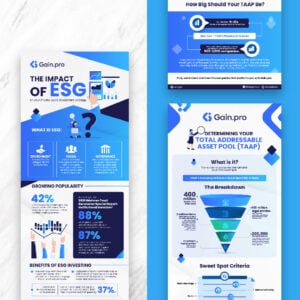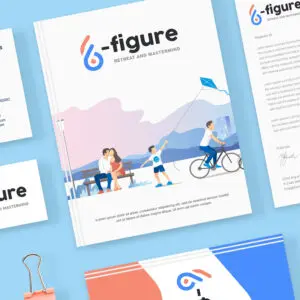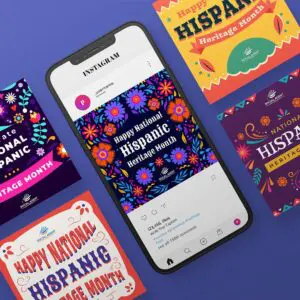
Everyone wants to write straightforward and unique content. The introduction of ChatGPT, an impressive conversational AI chatbot, ignited the curiosity of internet users. They are eager to experiment with this language model. While ChatGPT’s writing may appear human-like, the model does not always produce perfect responses. Constantly adjusting AI outputs to match your voice can be challenging. How can we streamline this process? Below is a step-by-step guide on how to make ChatGPT write like a human.
Table of Contents
- What are ChatGPT Prompts?
- Provide Clear and Specific Prompts
- Use Contextual Information
- Iterate, Refine and Train
- Provide Feedback
- Leverage Fine-Tuning Techniques
What are ChatGPT Prompts?
Before digging deeper into the process, let us first define ChatGPT prompts. ChatGPT prompts allow you to start conversations with the ChatGPT or any conversational AI tool. However, these prompts are not only questions or statements. You can use prompts as your creative recipe to harness the AI’s capabilities for various applications. The secret to unlocking the potential of ChatGPT’s language model lies in crafting clear, specific, and purpose-driven prompts to generate better results or answers.
Tips on How to Make ChatGPT Write Like a Human
With 1.6 billion global users recorded in December 2023, ChatGPT has already taken cyberspace by storm. Following the launch of GPT-4, ChatGPT’s abilities have become endless. When utilized correctly, anyone can use it to increase their productivity. Mastering the perfect prompt and training ChatGPT to write a human are ways to maximize this AI tool’s power.
Provide Clear and Specific Prompts
When writing any prompt, keep it simple to get the most favorable response from the chatbot. Using too much jargon in the sentences or vague prompts can confuse the model. Ensure your requests are clear and specific. For example, if you need content for a product name, key features, and your desired tone.
Here is an example of a simple prompt to generate a description of an eco-friendly product.
Also, make sure that your prompt is free from typos and grammatical errors because it may affect the quality of the response. It is better to proofread the input twice so ChatGPT can understand your message clearly.
Use Contextual Information
Context plays a crucial role in training ChatGPT to write like a human. It enables ChatGPT to better understand your needs and deliver tailored responses.
Take advantage of the model’s ability to remember previous statements and questions in your conversation. That said, compose your question with context and ask a follow-up question to get the most out of ChatGPT. Always provide all the details and background information in all your interactions with this AI chatbot.
Let’s say you want to prepare for a mountain bike challenge. You could ask ChatGPT:
“How can I prepare for a mountain bike challenge?”
The response to the prompt above is more likely a generic guide to preparing for a mountain bike challenge. But if you want a clear answer, you can tell AI that you are training for your first mountain bike race.
In the second prompt, you are giving AI background information, and it will provide you with a more focused answer. ChatGPT provided detailed answer that looks like this:
Here is another example:
“I am a Shopify seller exploring how selling environmentally-friendly products can be a win-win idea: helping the world while running a profitable business. I am looking for the best examples of eco-friendly products for a profitable Shopify business. Can you recommend 10 types of eco-friendly products and their key features?”
In this example, instead of just asking how to sell products on e-commerce websites, the focus is specifically on eco-friendly products that can be both profitable and environmentally sustainable. Go ahead and input this prompt! You will find the response very interesting.
Iterate, Refine, and Train
If the first response is inadequate, you can repeat and refine your prompt to provide additional details. This will train the model to give better answers customized to your needs.
If ChatGPT’s response contains errors, you can correct it and request a more accurate explanation. Every time you refine the prompt and the chatbot answers, ChatGPT learns how to respond better to your prompts.
Do not hesitate to experiment with different prompts. Maximize ChatGPT’s versatility in streamlining your creative exploration. You can try various approaches, parameters, and formats to see what works best for your requirements.
Provide Feedback
Like all language models, ChatGPT has limitations and can give inconsistent answers and incorrect information. So, it is essential to double-check the information it provides.
OpenAI encourages users to provide feedback on what ChatGPT generated by using the thumbs-up and thumbs-down buttons to improve the platform. You could also participate in the company’s Bug Bounty Program to earn up to $20.000 by reporting security bugs and safety issues.
Leverage Fine-Tuning Techniques
ChatGPT fine-tuning involves retraining an existing large language model (LLM), particularly OpenAI’s GPT models. These models are the backbone of LLMS and serve various purposes. You can achieve this by preparing your data, uploading your files, and establishing a custom OpenAI session to manage the fine-tuning.
A fine-tuned model is helpful when you want to leverage the extensive abilities of ChatGPT. However, you need to enhance the model’s knowledge with other information. ChatGPT can still have some disadvantages, such as giving wrong information and requiring to be trained as the information changes. It may not be an excellent option for applications that need 100% accuracy or with information that changes regularly.
For instance, if you want ChatGPT to write a paper specialized in medical terminology, you could fine-tune the model using a dataset with medical literature, research papers, and healthcare-related documents. The model learns to understand and generate relevant text for a medical report during the fine-tuning process.
But remember, training ChatGPT requires adequate computer resources, knowledge of machine learning, and adherence to ethical considerations like data privacy. Using pre-trained models and fine-tuning them on smaller, domain-specific datasets is a better approach for most applications.
Conclusion
Whether you are a business owner, a digital marketer, or a blogger, creating compelling texts that will resonate with your audience is crucial. You can speed up the process by starting a ChatGPT conversation with an excellent prompt. Given ChatGPT’s limitations, users play a pivotal role in training this language model. These tips will help you make ChatGPT write like a human and get responses tailored to your preferences and requirements. Stay tuned for Penji’s AI Courses and unleash the power of ChatGPT.
About the author

Rowena Zaballa
With a background as a former government employee specializing in urban planning, Rowena transitioned into the world of blogging and SEO content writing. As a passionate storyteller, she uses her expertise to craft engaging and informative content for various audiences.



















